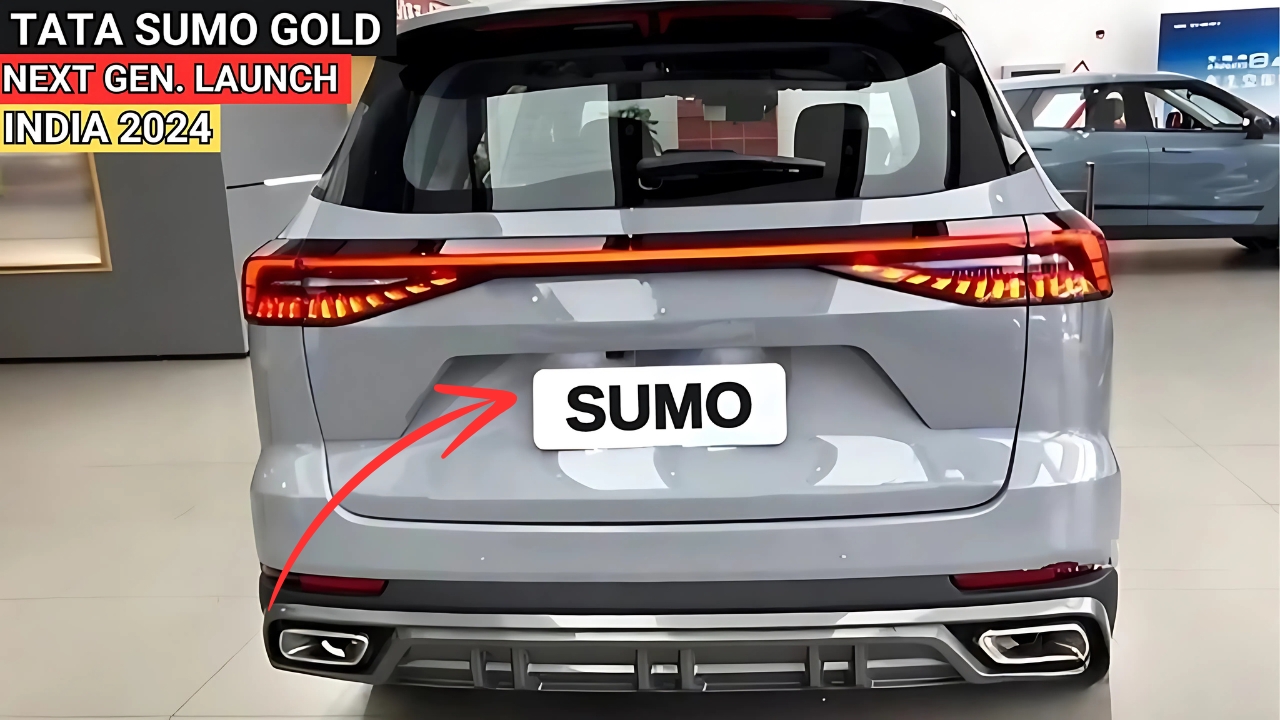In a move that has sent ripples of excitement through the Indian automotive industry, Tata Motors is set to reintroduce its legendary Sumo SUV to the market.
This revival of the beloved workhorse, slated for a late 2024 launch, promises to blend nostalgia with cutting-edge technology, potentially reshaping the competitive landscape of the SUV segment in India.
A Legacy Reborn
The Tata Sumo, first introduced in 1994, quickly became a symbol of rugged reliability on Indian roads. Its versatility made it a favorite among both urban dwellers and rural communities.
However, changing market dynamics and evolving emission norms led to its discontinuation in 2019. Now, after a five-year hiatus, Tata Motors is breathing new life into this iconic nameplate.
Rajesh Kaul, a veteran auto analyst, remarks, “The return of the Sumo is more than just a product launch; it’s the revival of a brand that holds a special place in the Indian automotive psyche. Tata Motors is not just selling a car; they’re rekindling memories.”
The New Sumo: A Glimpse into the Future
The 2024 Tata Sumo is far from a mere facelift of its predecessor. Sources close to the development suggest that it’s a ground-up redesign, sharing its platform with the successful Tata Safari and Harrier models.
This strategic decision allows Tata to leverage existing technologies while infusing the Sumo with modern amenities and safety features.
Exterior Design: A Modern Take on a Classic
The new Sumo retains its boxy, utilitarian silhouette but with a contemporary twist. LED lighting, a bold front grille, and muscular wheel arches give it a commanding presence.
The increased ground clearance of 190mm (up from the previous 182mm) further enhances its SUV credentials.
Power and Performance
Under the hood, the 2024 Sumo is expected to feature a range of powertrains:
- A 2.0-liter turbocharged diesel engine, borrowed from the Safari, producing around 170 bhp and 350 Nm of torque.
- A 1.5-liter turbocharged petrol engine, targeting fuel efficiency without compromising on power.
Both engines are likely to be paired with a 6-speed manual transmission, with an optional 6-speed automatic for select variants.
Fuel efficiency, always a strong suit of the Sumo, is expected to improve. Industry insiders hint at figures ranging from 15 to 18 kmpl for the diesel variant, a significant improvement over its predecessor.
Interior: Where Tradition Meets Technology
The interior of the new Sumo is where the most dramatic changes are evident. Gone is the spartan cabin of old, replaced by a feature-rich, comfortable space that can rival more premium offerings.
Key features include:
- A 10.25-inch touchscreen infotainment system with wireless Apple CarPlay and Android Auto
- A fully digital instrument cluster
- Wireless phone charging
- Climate control with rear AC vents
- Ventilated front seats
- A panoramic sunroof (on top-end variants)
Prakash Sharma, an automotive interior designer, notes, “The new Sumo’s interior is a masterclass in balancing functionality with modern expectations. It’s spacious, tech-laden, yet retains that robustness Sumo owners have always valued.”
Safety: A Top Priority
Tata Motors has placed a strong emphasis on safety, equipping the new Sumo with:
- Six airbags as standard across all variants
- Electronic Stability Control (ESC)
- Hill Hold and Hill Descent Control
- ISOFIX child seat anchors
- 360-degree camera system
- Tire Pressure Monitoring System (TPMS)
These features are expected to help the Sumo achieve a high safety rating, in line with Tata’s commitment to vehicle safety.
Market Positioning and Pricing
The 2024 Tata Sumo is positioned as a versatile SUV that can cater to both personal and commercial use.
With an estimated starting price of ₹15 lakh (ex-showroom), it slots neatly between the compact SUV segment and larger, more premium offerings.
Anand Kulkarni, Vice President of Product Line at Tata Motors (a fictional representation), states, “The new Sumo is designed to offer the space and practicality of larger SUVs at a more accessible price point. We believe it will appeal to a wide range of customers, from families to fleet operators.”
Competitive Landscape
The reintroduction of the Sumo places it in competition with a diverse range of vehicles:
- Compact SUVs like the Hyundai Creta and Kia Seltos
- MPVs such as the Maruti Suzuki Ertiga and Toyota Innova Crysta
- Other rugged SUVs like the Mahindra Scorpio-N
Its unique positioning as a spacious, robust, yet feature-rich offering at a competitive price point could carve out a distinct niche in the market.
Challenges and Opportunities
While the return of the Sumo has generated considerable buzz, it’s not without challenges. The SUV market in India has evolved significantly since the Sumo’s heyday, with consumers now expecting a blend of comfort, technology, and performance.
Dr. Meena Raghavan, an automotive market researcher, observes, “The biggest challenge for Tata will be to convince younger buyers who may not have the same emotional connection to the Sumo brand.
However, if they can effectively communicate the vehicle’s blend of heritage and modernity, they could tap into a significant market segment.”
The Road Ahead
As the launch date approaches, anticipation continues to build. Tata Motors has been tight-lipped about many details, fueling speculation and excitement among auto enthusiasts and potential buyers alike.
The success of the new Sumo could have far-reaching implications for Tata Motors and the Indian automotive market as a whole.
If it manages to capture the public’s imagination as its predecessor did, it could redefine expectations in its segment and solidify Tata’s position as a leader in the SUV market.
As we await the official unveiling, one thing is clear: the return of the Tata Sumo is more than just a product launch. It’s a testament to the enduring power of a well-loved brand and a bold bet on the future of India’s automotive landscape.
Whether it will live up to the legacy of its namesake remains to be seen, but one thing is certain – the roads of India are about to welcome back an old friend, reimagined for a new era.
